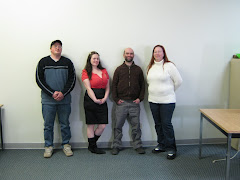“I have found no
greater satisfaction than achieving success through honest dealing and strict
adherence to the view that, for you to gain, those you deal with should gain as
well." - Alan Greenspan, Former Chairman of the U.S. Federal Reserve
If you’ve been reading these
weekly tips, no doubt you’ve noticed that professional sales is not about
“jamming” the prospect with so much information about you and your company that
they will eventually be persuaded to buy.
It’s about discovering how what you do matches with what the client
desires, or, how you can “delight” the person.
In other words, it should be a “win-win”. Your client “wins” in that they receive
solutions, real benefit, excellent value.
You “win” in that you generate revenue for your business and for your
family.
This should be a relief to those
not experienced in sales; a reminder to those who already understand the
consultative sales process; and perhaps a refreshing new perspective to those
who have used the old aggressive methods, but are willing to consider a more
progressive view. I’ve found that the
more I treat clients with dignity, the better my success rate. What works best is exploring together with
clients ways that your product or service might solve their problems.
For example, the common
format for sales presentations often goes something like this:
1. Warm up - about 10% of the call time
2. Presentation - about 40%
3. Closing - about 50%
Let’s make clear that this is the undesirable
old pushy format. A better approach
would be to spend much more time doing a “needs analysis”. I often compare this to what a medical doctor
does in diagnosing your condition before prescribing a suitable remedy.
Your sales presentation should be structured more like this:
1. Warm up (Build rapport, establish your credibility, etc.)
– about 10%
2. Diagnosis through open-ended questions – about 50%
3. Presentation of your solution based on uncovered needs
(The “treatment plan”) – about 25%
4. Closing – about 15%
When you actually care about your clients your emphasis
shifts from “trying to sell something” to “how can I help you?” Your sales efforts will then be more
productive. Spend time learning as much
as you can about the person’s unique situation, so that you will be able to
offer an appealing, customized solution.
During the discussion, your showing genuine personal interest is likely
to create a strong desire for your product or service. Then the “close” will more often be something
like “It sounds like our solution is what you are looking for, so when would
you like to get started?” or “So, where do we go from here?” or “Would you like
the red one or the blue one?” (Note:
these are strictly hypothetical – please use the ideas to ask questions in your
own words)
Look for the “win-win”’ in every business situation and you
will be far more successful in the long run.
As always, when you need personalized help implementing any
of these suggestions, contact me.
- Al
www.selfemploymentassistance.ca
